Section 4.6 Exercises
These are the exercises in Module 4.
Note that many of these exercises contain images, which might not display automatically. Make sure to click ’Activate’ on each in order to load the images.
Checkpoint 4.6.1.
Checkpoint 4.6.2.
Checkpoint 4.6.3.
(a) \((f\circ g)(x)=\), it’s domain is all real numbers except .
(b) \((g\circ f)(x)=\), it’s domain is all real numbers except .
(c) \((f\circ f)(x)=\), it’s domain is all real numbers except .
Checkpoint 4.6.4.
Checkpoint 4.6.5.
Use properties of the functions to match each of the following functions with its graph. Do not use your calculator.
1. \({\frac{-1}{x^{2}}}\)
2. \({\frac{1}{x^{2}}}\)
3. \({\frac{1}{x}}\)
4. \({\frac{-1}{x}}\)
A
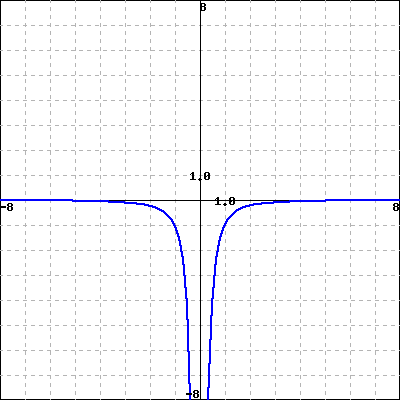
B
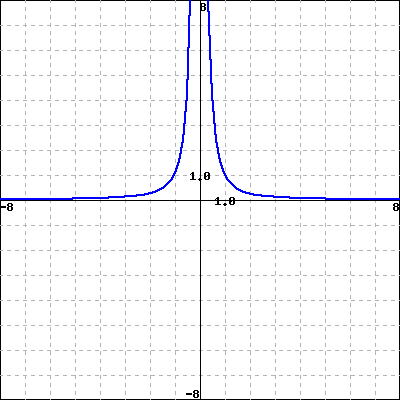
C
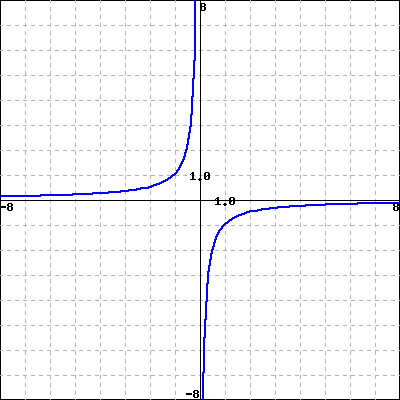
D
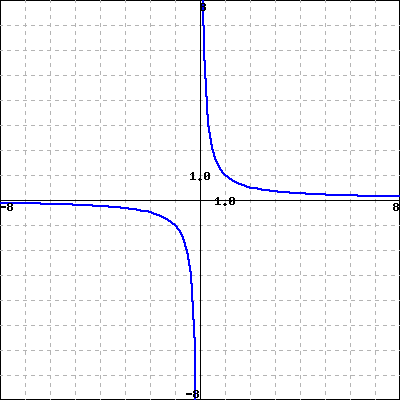
Checkpoint 4.6.6.
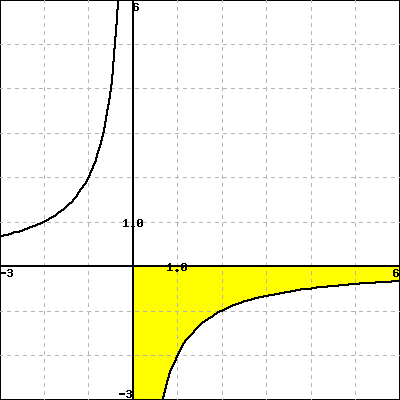
Determine the system of linear inequalities for which the solution set is shown on the graph.
-
\(\displaystyle \begin{cases} x \le 0 \\ x \le -2/y \end{cases} \)
-
\(\displaystyle \begin{cases} x \ge 0 \\ x \ge -2/y \end{cases} \)
-
\(\displaystyle \begin{cases} x \ge 0 \\ x \le -2/y \end{cases} \)
-
\(\displaystyle \begin{cases} y \le -2/x \\ x \le 0 \end{cases} \)
-
\(\displaystyle \begin{cases} y \le -5/x \\ x \ge 0 \end{cases} \)
-
None of the above
Checkpoint 4.6.7.
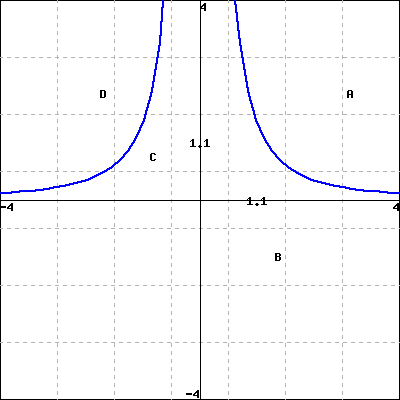
Which of the regions A, B, C, D belong to the solution set of the given system of inequalities.
-
Region A lies above the curve and to the right of the \(y\)-axis.
-
Region B lies below the curve and to the right of the \(y\)-axis.
-
Region C lies below the curve and to the left of the \(y\)-axis.
-
Region D lies above the curve and to the left of the \(y\)-axis.
\(\begin{aligned} 2/x^2 \amp \le y \\ x \amp \ge 0 \end{aligned}\)
Checkpoint 4.6.8.
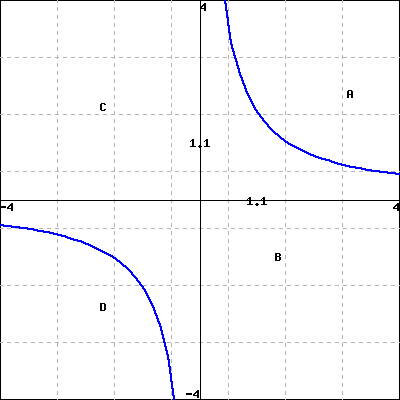
Which of the regions A, B, C, D belong to the solution set of the given system of inequalities.
-
Region A lies above the curve and to the right of the \(y\)-axis.
-
Region B lies below the curve and to the right of the \(y\)-axis.
-
Region C lies above the curve and to the left of the \(y\)-axis.
-
Region D lies below the curve and to the left of the \(y\)-axis.
\(\begin{aligned} 2/x \amp \ge y \\ x \amp \ge 0 \end{aligned}\)
Checkpoint 4.6.9.
Checkpoint 4.6.10.
Checkpoint 4.6.11.
Find the inverse for each of the following functions.
\(f (x) = 10 x + 2\)
\(f^{-1}( x ) =\)
\(g(x) = 8 x^3 -1\)
\(g^{-1}( x ) =\)
\(\displaystyle h(x) = \frac{10}{x + 1}\)
\(h^{-1}( x ) =\)
\(j(x) = \sqrt[3]{x + 8}\)
\(j^{-1}( x ) =\)
Checkpoint 4.6.12.
Determine whether the following function has an inverse. If it has an inverse, find its inverse function \(f^{-1}(x)\text{.}\) If it does not have an inverse, write “undefined” in the blank provided. You do not need to simplify your answer.
\(f(x)= x^2 + 5\)
\(f^{-1}(x)=\)
Checkpoint 4.6.13.
Checkpoint 4.6.14.
Enter a T or an F in each answer space below to indicate whether the corresponding statement is true or false.
Checkpoint 4.6.15.
Checkpoint 4.6.16.
Use properties of the functions to match each of the following functions with its graph. Do not use your calculator.
1. \({\ln\mathopen{}\left(x-2\right)}\)
2. \({2+\ln\mathopen{}\left(x\right)}\)
3. \({\ln\mathopen{}\left(2-x\right)}\)
4. \({-\ln\mathopen{}\left(-x\right)}\)
5. \({\ln\mathopen{}\left(-x\right)}\)
A
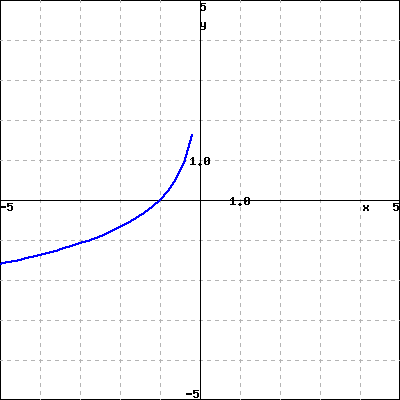
B
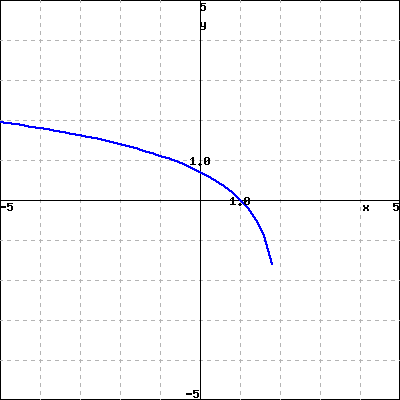
C
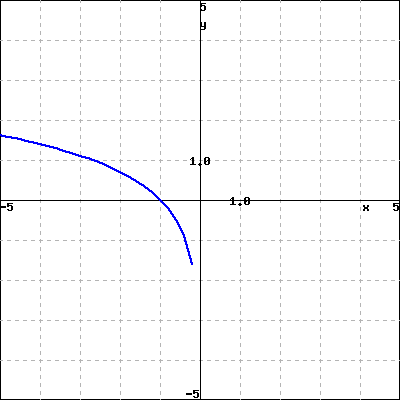
D
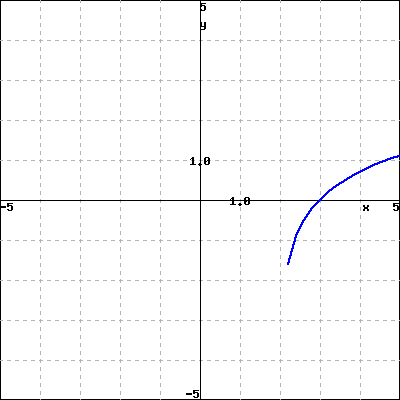
E
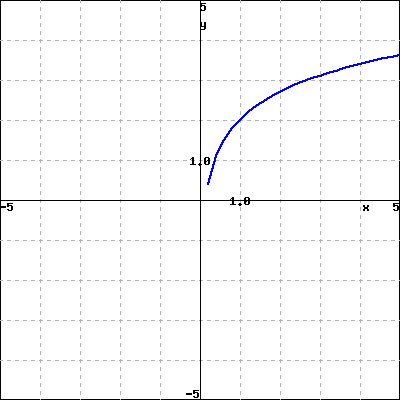
Checkpoint 4.6.17.
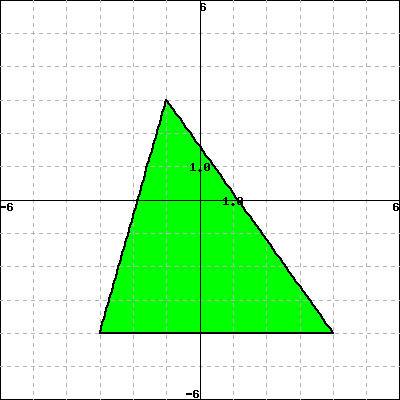
Select the inequalities for which the solution set is the graph above.
Checkpoint 4.6.18.
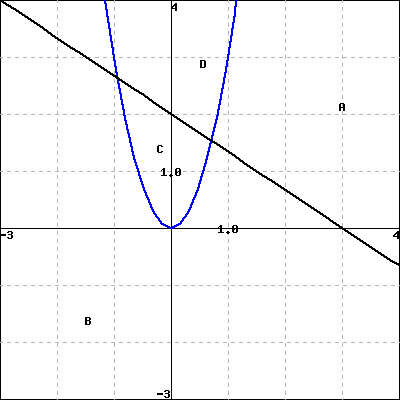
Which of the regions A, B, C, D belong to the solution set of the given system of inequalities.
The regions A, B, C, D are nonoverlapping regions bounded by the indicated lines.
\(\begin{array}{r@{}r@{}r@{}r}
3 x^2 \amp - y \amp \ge \amp 0 \\
2 x \amp + 3 y \amp \le \amp 6
\end{array}\)
Checkpoint 4.6.19.
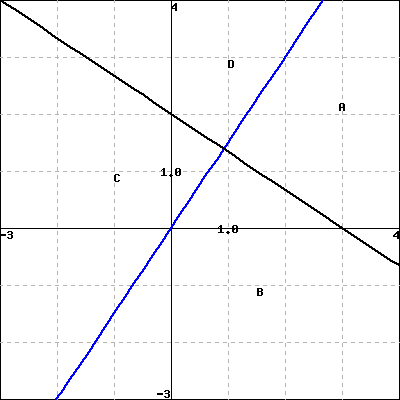
Which of the regions A, B, C, D belong to the solution set of the given system of inequalities.
The regions A, B, C, D are nonoverlapping regions bounded by the indicated lines.
\(\begin{array}{r@{}r@{}r@{}r}
3 x \amp -2 y \amp \le \amp 0 \\
2 x \amp + 3 y \amp \le \amp 6
\end{array}\)
Checkpoint 4.6.20.
For each graph, determine the system of linear inequalities for which the solution set is shown on the graph.
1.
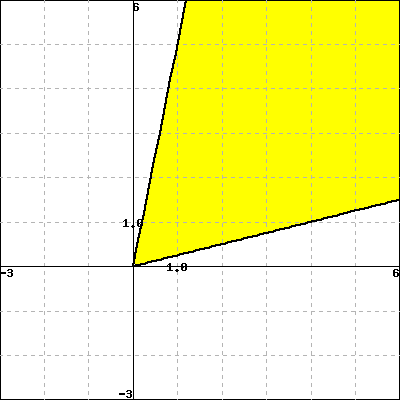
-
\(\displaystyle \begin{cases} y \ge 5 x \\ x \ge 4 y \end{cases} \)
-
\(\displaystyle \begin{cases} y \ge 4 x \\ x \ge 5 y \end{cases} \)
-
\(\displaystyle \begin{cases} y \le 5 x \\ x \ge 0 \end{cases} \)
-
\(\displaystyle \begin{cases} y \le 5 x \\ x \le 4 y \end{cases} \)
-
\(\displaystyle \begin{cases} y \ge 5 x \\ x \le 4 y \end{cases} \)
-
None of the above
2.
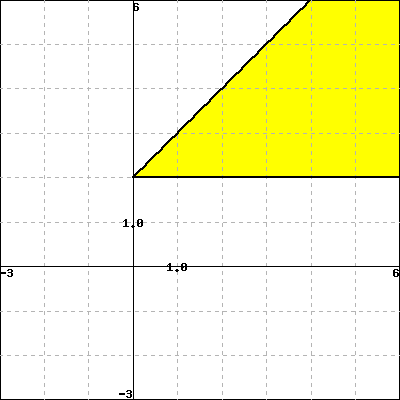
-
\(\displaystyle \begin{cases} y \le x \\ y \le 2 \end{cases} \)
-
\(\displaystyle \begin{cases} y \le x + 2 \\ x \ge 2 \end{cases} \)
-
\(\displaystyle \begin{cases} y \le - x - 2 \\ y \le 2 \end{cases} \)
-
\(\displaystyle \begin{cases} y \le x + 2 \\ y \ge 2 \end{cases} \)
-
\(\displaystyle \begin{cases} x \le y - 2 \\ y \ge 2 \end{cases} \)
-
None of the above
